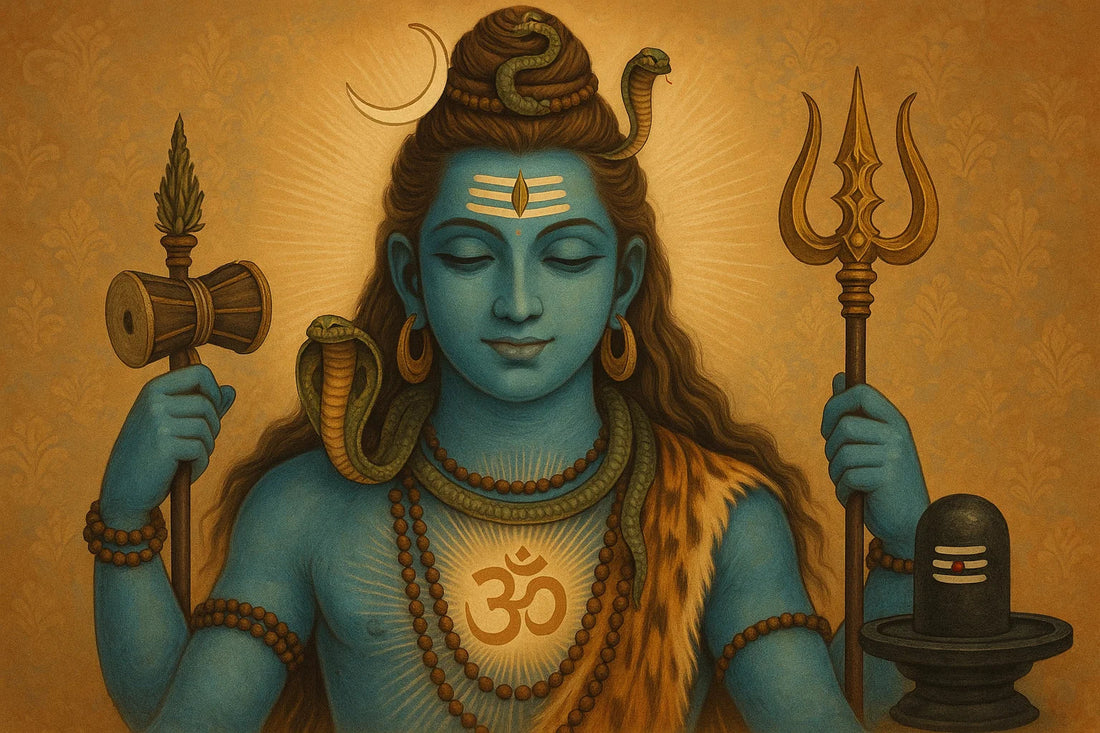
Panchakshari Mantra: Meaning and Glory
In this article, you will learn in detail about the meaning and significance of the Panchakshari Mantra.
Panchaksharamidam punyam yah pathet Shiva sannidhau |
Shivalokamavapnoti, Shivena saha modate | |
(-Verse VI, Shiv Panchakshari Stotram, Adi Shankaracharya)
(Whoever chants the sacred Panchakshari mantra in the presence of Lord Shiva, the Shiv Lingam, attains the divine realm of Shiva and always lives in bliss with Him.)
Simple yet Profound
Most people, even those who are beginners at Mantra Sadhana, are familiar with the simple but powerful Panchakshari Mantra—namah shivaya. Considered extremely superior in the Vedas and Puranas, the Panchakshar mantra is truly a “Mahamantra” (a great mantra). It contains the essence of the Vedas. One of Lord Shiva’s names is Bhole Bhandari, (The one easily pleased by devotion). Chanting the Panchakshari Mantra is a powerful method to invoke his presence and seek his grace. Since it is the very form of Lord Shiva, meditating on the Panchakshari mantra provides liberation from the endless cycle of birth and death.
Panchakshari—The Five Potent Syllables
In Siddha Shaivism and Shaiva Siddhanta traditions (part of the Shaiva sect) the Panchakshari mantra is seen as a reflection of Lord Shiva's universal unity. The Sanskrit word ‘Panchakshari’ means five syllables. They represent the five elements (Panch Mahabhutas)—earth, water, fire, air and space— which are the building blocks of everything in nature.
Na: The first syllable represents the Earth element (Prithvi), and purifies it.
Ma: Represents and purifies the Water element (Jal)
Shi: Activates the Fire element (Agni).
Va: Activates the Air element (Vayu).
Ya: Activates the Space element (Akasha).
Chanting the seed syllables of Panchakshari mantra with ‘Om’, the primordial sound of the universe, helps us master the five elements and brings us in a state of harmony and balance with mother nature and our own selves.
The Heart of the Vedas
This sacred Panchakshari mantra is also known as the heart of the Vedas. It is the essence of the Sri Rudram hymn found in the Taittiriya Samhita of Krishna Yajurveda. The Panchakshari mantra occurs in the eighth Anuvaka of Namakam as ‘Namah Shivaya Cha Shivatarai Cha’ : Salutations to Shiva, who is auspicious, and Salutations to Shivatara who is more auspicious than that. Lord Shiva is praised as the supreme ruler of all cosmic elements, the ultimate sovereign (power) of the universe.
The Shri Shiva Panchakshara Stotra is completely dedicated to a deeper explanation of the Panchakshari mantra. Tamil text Tirumandiram also elaborates on the greatness of this mantra. References to the Om Namah Shivaya mantra can also be found in the Shiva Purana (Vidyeshvara Samhita, Chapter 1.2.10) and the Vayaviya Samhita (Chapter 13).
Lasting Impacts of the Panchakshari Mantra
Tamil Shaiva text Thiruvakkam explains the deep and positive effects of the Panchakshari mantra. Lord Shiva represents the state of absolute dispassion or ‘Vairagya.’ He is unaffected by the pains and sorrows of the external world. He is compassionate, forever serene, and detached. By meditating upon Lord Shiva’s name with the Panchakshari mantra, devotees can awaken the same extraordinary qualities of Lord Shiva in themselves.
The Panchakshari mantra also removes the fear of death and grants liberation (moksha). Lord Shiva Himself described its greatness to Ma Parvati, saying:
"O auspicious one! The glory of the Panchakshari Mantra cannot be fully described even in a hundred million years. It is the king of all mantras. When the entire world dissolves into me and is destroyed, all the Vedas and scriptures are situated in this Panchakshari Mantra. At that time, they do not get destroyed, as they are protected by my power."
Shravan is the most auspicious period to invoke Lord Shiva. Deepen your connection with Mahadev by performing the Panchakshari Sadhana (from 22 July-11 August) on the Sadhana App.




Comments
No comments yet. Be the first to share your thoughts.
Leave a comment